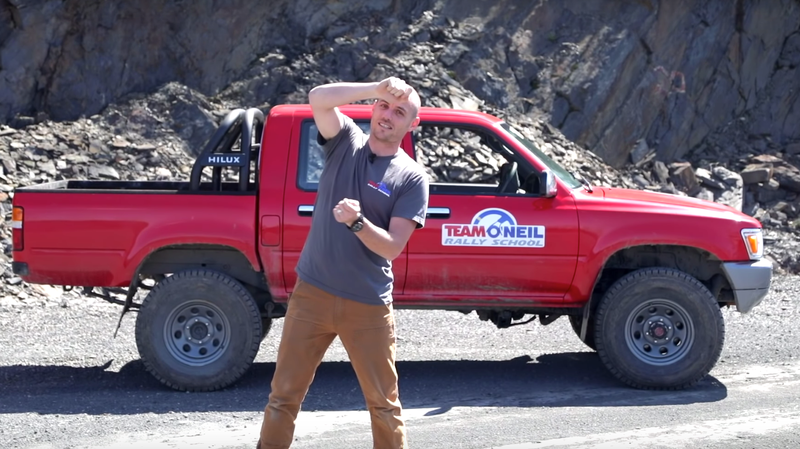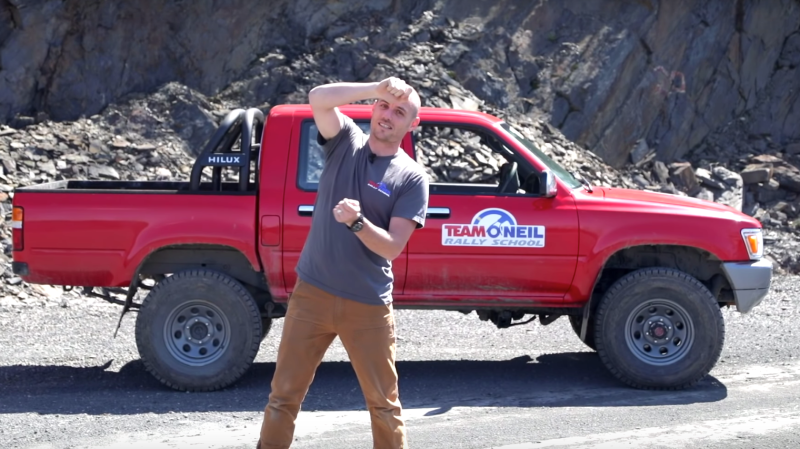
 Truck YeahThe trucks are good!
Truck YeahThe trucks are good!Being aware of your center of gravity is a big part of aggressively driving a truck, UTV or anything else that’s high off the ground without hurting yourself. Rally driver Wyatt Knox from Team O’Neil Rally School talks a little bit about that in this video.
I am, unfortunately, a cautionary tale of how badly things can go for you if roll a vehicle, so I can attest to the fact that a vehicular flip can catch you off guard even if you kind of know what you’re doing.
The most interesting observation in this clip, to me, was the notion of how critical road surface is to flipping-propensity. If you’re out doing donuts on a frozen lake with no grip, you’re probably not in much danger of rolling at all. But if you’re making tight turns on pavement, with a lot of grip, you could get yourself into trouble. Sand is especially treacherous if you’re going through it with a lot of speed.
Knox alluded to an equation for calculating a vehicle’s center of gravity, and while you’re probably not going to be thinking through it when you’re off-road racing, Car & Driver wrote up a neat explainer of how to calculate it last year.
Basically, your vehicle’s center of gravity height is the wheelbase times the change in weight between your front end level and raised, divided by the vehicle’s total weight times vehicle height divided by the square root of the wheelbase, squared, minus the vehicle height squared. At least… I think I interpreted that formula correctly.
Advertisement
But you know what, I’m writing this on a Friday night and I don’t think I made it to trigonometry in school so you should go ahead and reference Longacre Racing Products, Omnicalculator or How-To-Build-Hotrods to better understand the math, all of which have much handier tools to figure out a car’s COG than my paraphrasing.
Meanwhile, don’t forget to be aware of your vehicle’s balance, and be careful of doing long drifts on gravel roads where sharp rocks can knick your sidewalls and send you flying.













